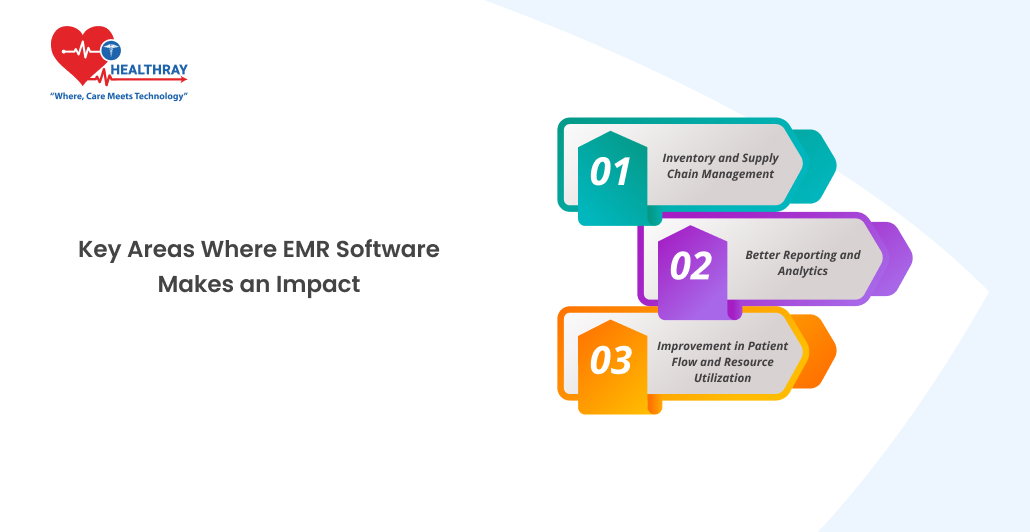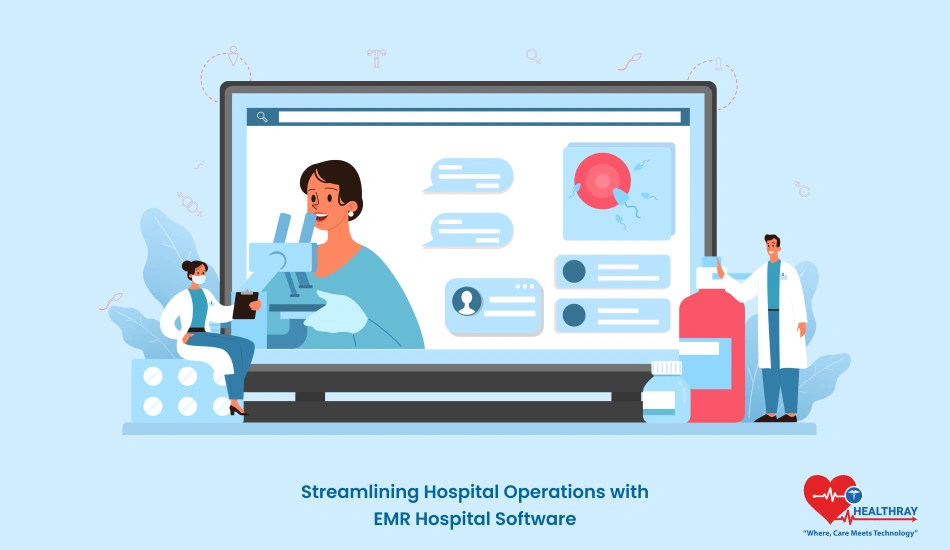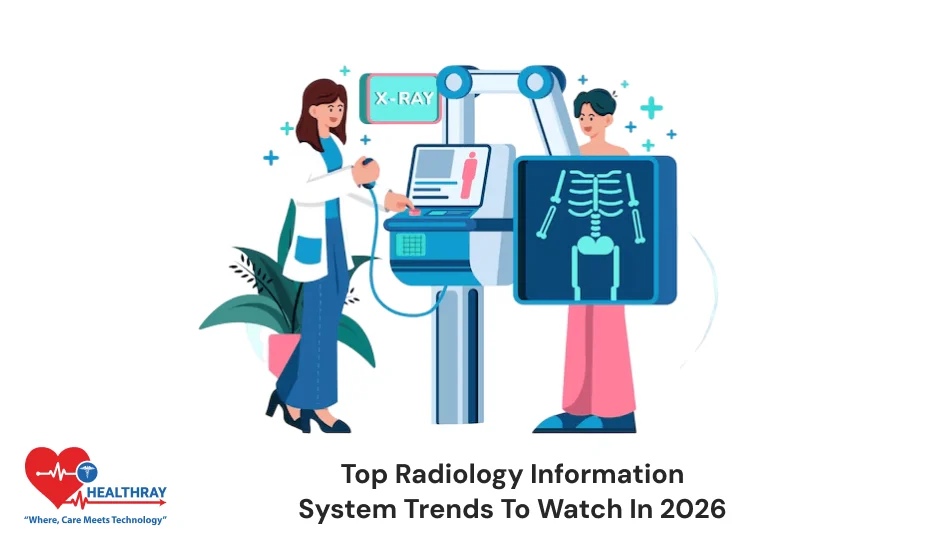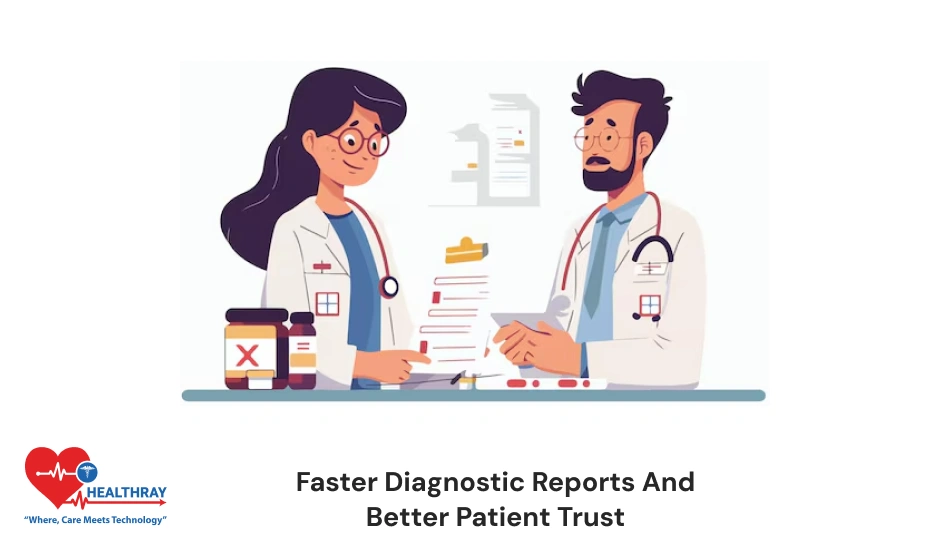Managing a hospital or clinic comes with a lot of responsibilities, not only regarding proper care for their patients but also in regard to management of their staff and performance of administration.
The most significant challenge for the owners of a hospital or clinic is the simplification of their operations. And for this aim, there are numerous solutions. One of the solutions is using the Electronic Medical Record. In fact, the EMR simplifies manual work, accelerates the process, and improves patient outcomes as well as operational efficiency.
But how exactly does EMR hospital software help? This article will explain how using EMR software from Healthray can improve everything from patient management to billing. You will also discover how EMR is essential for hospital owners, clinic owners, and specialty doctors who are looking to streamline their operations.
What is EMR Software?

EMR is a computer-based system that holds patient data and runs the whole activities of a hospital. It differs from the conventional paper record since the EMR system allows one to store and retrieve information on a patient in real-time. Beyond just keeping records, the system has combined multiple functions to add efficiency to a hospital or clinic. The features of EMR software are as follows:
Management of patient record: access in real time of patient history, drugs, and treatments.
Scheduling: Automate the process of scheduling and reminders for appointments.
Billing and claims processing: Automation of billing reduces the processing time and eliminates errors.
Data security: Encrypted and follows healthcare regulations on sensitive patient information.
These features, in turn, save time and reduce errors for hospital and clinic owners. Even specialty doctors enjoy instant access to patient records for informed decisions without much delay.
Why Streamlining Operations with EMR is Inevitable for Hospitals?

Managing a hospital or clinic is no doubt a difficult job. All that paperwork, lengthy administrative tasks, and the endless coordination of departments all ensure inefficiencies sneak into operations in daily activity. They suck up precious treatment time, errors are committed when patients’ accounts are rendered, and most of all, cause patients’ dissatisfaction.
These inefficiencies can be removed from EMR software through reduction of workload in multiple aspects of the management of the hospital.
Problems Experienced in Traditional Hospital Management
Paper Record: The paper record easily gets lost; they are prone to errors.
Handwritten Scheduling: Appointments, surgeries and follow-ups resulted in inefficiency since it was a chore.
Billing Misunderstandings: The manual system of billing might result in errors hence delays in payments occur; insurance denied.
Poor Communicating: Patient care is a time-consuming phenomenon in case, various departments within the hospital didn’t communicate
Benefits of EMR Software from Healthray
Automate Routine Tasks: EMR automatically schedules appointments and does data entry, freeing up staff to focus on more important tasks.
Real-Time Patient Data: Doctors and staff can instantly access up-to-date patient records, improving decision-making.
Billing Integration: EMR software automates the billing process, making it easier to track payments, claims, and insurance approvals.
Improved Patient Care: The doctors can give more accurate diagnoses and customized treatment plans because they have real-time access to the patient’s information.
Data Accuracy: Digitized records help eliminate human errors such as wrong dosages of medication or misinterpreted lab results.
Key Areas Where EMR Software Makes an Impact

Inventory and Supply Chain Management
The EMR software helps the hospitals and clinics monitor their stock and equipment. This ensures a situation of a stock out concerning some vital products like drugs will be prevented as the system offers best-of-breeds notification options concerning low stock.
This makes sure that the team or ER does not run at the last minute to get some critical materials and thus enhances the experience of patients.
EMR systems also capture expiry date and order automatically to make sure stock is never running low. This avoids unnecessary expenses and improves the efficiency of buying decisions that ultimately lower costs in the process.
Better Reporting and Analytics
The most valuable characteristic that EMR System in Healthcare brings is the generation of very precise reports. The owner and administrators can use the software in monitoring performance indicators including patient flow, revenue, and resource utilization of the hospital.
With this capability, hospital administrators can identify which areas need adjustment or improvement and properly allocate resources accordingly. These can help to increase the outcomes from the clinics. For example, based on length of patient stays or frequency of readmissions due to particular problems, specialists might adapt treatment to become more targeted and precise.
Improvement in Patient Flow and Resource Utilization
There would always be some bottlenecks in the hospitals; however, for very busy departments, it always happens to the emergency room. EMR documents a patient’s admission, discharges, transfers, and, therefore, helps the hospital administrators use such resources, as staff, beds, and even equipment, effectively.
This allows specialists to have little or no wait time between their consultations with the patients. Thus, it enhances the overall experience for the patients due to timely attention.
Selecting the Right EMR Software for Your Hospital
Selecting the right EMR software is a daunting task, especially with so many options available. Here’s what you should consider:
Factors to Consider:
Scalability:
Your EMR software should scale up with your hospital or clinic. Be it a small clinic or a big hospital, the system should manage increased patient loads and new departments.
Integration:
Select EMR software that integrates with existing systems. From billing to pharmacy management, lab results integration will avoid data silos and improve workflow.
Customization:
Hospitals or clinics may be different in their needs. For specialty doctors, EMR might have to be tailored to unique patient requirements; for instance, cardiology will require more complex diagnostic tools, or pediatrics require customized patient history.
User Interface:
The product should be friendly to the end-users, thereby allowing the users to learn as fast as possible and adopt it with minimal disturbances.
Examples of EMR Software:
Hospital-specific EMR software solves their problems as it comes with features that may be helped for the optimization of operations. Healthray has customizable solutions catering to specialty doctors and hospitals: scalable as well as user-friendly EMR systems.
Overcoming the Challenges of EMR Implementation
It is a very tough process to implement EMR software in hospitals and clinics, especially if they are transitioning from paper records or archaic systems. One of the major obstacles faced is staff resistance to change. Staff members who have been used to traditional methods feel overwhelmed by the new technology. There is a lot to learn, and usually, fear that the system will make their job more complicated instead of easier.
Another challenge is data security and compliance. Hospitals handle vast amounts of sensitive patient information, and any transition to a digital system increases concerns over potential data breaches.
Therefore, it is essential to ensure that the EMR system complies with regulations like HIPAA and that the system has robust encryption and access controls for patient data.
The setup costs of implementing an EMR system are prohibitively high for small clinics. On the bright side, saving time and reducing errors; however, upfront costs of software, training, and possibly hardware upgrade are steep.
Many providers fear the maintenance costs of updating and maintaining systems, support costs, etc. The fourth last is the disruption of workflows. Implementing an EMR system temporarily derails the hospitals’ workflows because, after all, people need time to know how to make use of such a system.
It often assumes the shape of short-term inefficiencies and frustration for all; that may again mean low levels of patient satisfaction. This is also averted by letting hospitals handle well the shift of the process when the time is there for them to train into daily demands put by patients.
Even after overcoming all these hurdles, with proper planning and phased implementation, hospitals and clinics can succeed in implementing EMR software and reap its benefits in the long run.
For the hospital and clinic owners and specialty doctors, the use of an EMR system, like that of Healthray, is much more than a mere gear shift with technological trend. It is a step change to the delivery of health care. EMR software smoothes the hospital’s operations, that will lead to a better patient care, reduction of administrative burden, and generally an improvement in efficiency for the facilities.y streamlining hospital operations, EMR software helps improve patient care, reduce administrative burdens, and enhance the overall efficiency of healthcare facilities.





